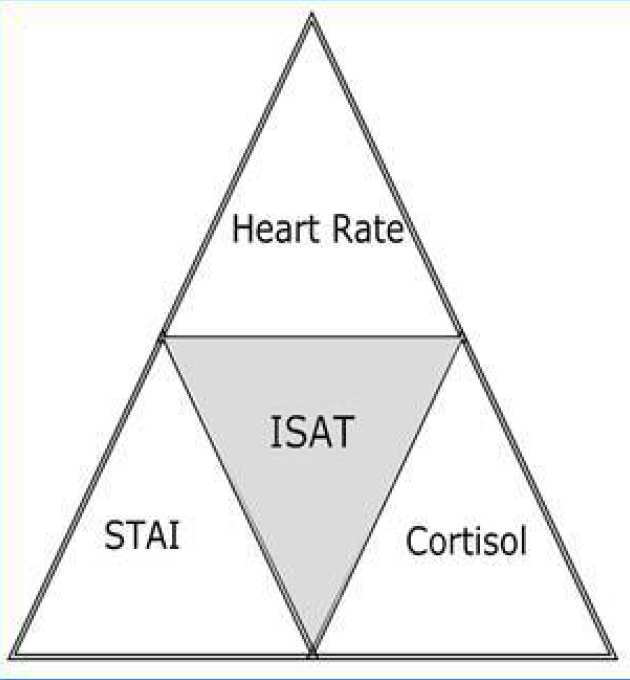Background

According to psychological approaches to stress, humans manage the stimuli that they receive from their environment on the basis of their cognitive appraisal of them and their perceived ability to cope with them. Stress occurs when we feel unable to cope with the stimulation we receive form our environments.
Surgical work can be stressful. Surgeons are often subjected to a number of stressors as part of their work– including stressors that stem from the patient (e.g., unusual anatomy, unstable patient, technically challenging procedure), their team (e.g., very junior team in the operating theatre), and their wider environment (e.g., equipment failures in the operating theatre, time pressures).
If we aim to understand surgical stress and improve how surgeons deal with it we ought to be able to measure it. Multiple methods to measure stress have been reported in the stress literature – including skin conductivity, eye tracking methods, amylase and cortisol levels amongst others.
Within our team, we have been carrying out research on surgical stress for a number of years. We have developed a system to measure stress within operating theatres – the Imperial Stress Assessment Tool (ISAT). ISAT is built on the premise that stress is both an objective physiological response of the organism and also a subjective experience of the person who feels stressed. ISAT, therefore, consist of three components:
-
An objective continuous assessment of heart rate
-
An objective measurement of cortisol levels (typically via saliva samples)
-
A subjective self-report based on a well-validated psychological scale – the 6-item form of the State Trait Anxiety Inventory (STAI)
In prospective research with surgeons and surgical tasks we have shown that these 3 components correlate and capture successfully the range of physiological and emotional responses of surgeons to stressors.
References
- Arora S, Russ S, Petrides KV, Sirimanna P, Aggarwal R, Darzi A, Sevdalis N. Emotional intelligence and stress in medical students. Academic Medicine 2011;86:1311-7.
- Arora S, Aggarwal R, Moran A, Sirimanna P, Crochet P, Darzi A, Kneebone R, Sevdalis N. Mental practice: Effective stress management training for novice surgeons. Journal of the American College of Surgeons 2011;212:225-33.
- Hull L, Arora S, Kassab E, Kneebone RL, Sevdalis N. Assessment of stress and teamwork in the operating room: an exploratory study. American Journal of Surgery 2011;201:24-30.
- Arora S, Sevdalis N, Aggarwal R, Sirimanna P, Darzi A, Kneebone R. Stress impairs psychomotor performance in novice laparoscopic surgeons. Surgical Endoscopy 2010;24:2588-93.
- Arora S, Sevdalis N, Nestel D, Woloshynowych M, Darzi A, Kneebone RL. The impact of stress on surgical performance: A systematic review of the literature. Surgery 2010;147:318-330.
- Arora S, Hull L, Sevdalis N, Tierney T, Nestel D, Woloshynowych M, Darzi A, Kneebone RL. Factors compromising safety in the surgical environment: Stressful events in the operating room. American Journal of Surgery 2010;199:60-5.
- Arora S, Tierney T, Sevdalis N, Aggarwal, Nestel D, Woloshynowych M, Darzi A, Kneebone RL. The Imperial Stress Assessment Tool (ISAT): A feasible, reliable and valid approach to measuring stress in the operating room. World Journal of Surgery 2010;34:1756-63.
- Arora S, Sevdalis N, Nestel D, Tierney T, Woloshynowych M, Kneebone R. Managing intra-operative stress: What do surgeons want from a crisis training programme? American Journal of Surgery 2009;197:537-43.
Contact
For further information contact Sonal Arora